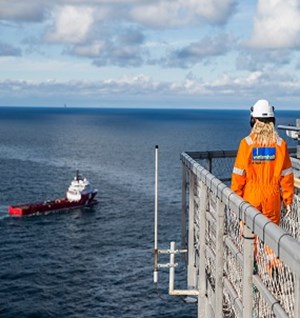100 North Sea reservoirs needed to meet 2050 CCUS demand, Xodus reports
(WO) – The volume of CO2 being injected into the North Sea by 2050 will be equivalent to the natural gas currently being extracted from the basin, according to a new report from global energy consultancy Xodus.
That scale of carbon capture, utilization and storage (CCUS) will require some 100 reservoirs, more than 7,500 km of new pipelines and dozens of onshore emissions capturing and gathering sites.
Entitled Forecasting the North Sea CCUS infrastructure to 2050, the report, which was produced in partnership with Subsea7, is designed to be used as a tool for assessing the relative cost efficiency of CCUS projects and when they would become viable.
Through a detailed analysis, Xodus assessed 560 potential storage sites, existing North Sea gas pipelines and potential new infrastructure to rank the cost efficiency of different CCUS initiatives.
It is hoped that this whitepaper will support CCUS operators and stakeholder to make better informed investment decisions.
Europe is the only leading economic region that has its largest hydrocarbon basin at the heart of its economy. About 40% of European industrial emissions are generated within 500 km of the North Sea, a strategic advantage in reducing the cost of developing CCUS projects.
In the coming decade, Xodus forecasts that up to 100% of European CCUS projects will be anchored in the North Sea, though over time this share will reduce. Based on the high-case estimates for emissions reduction, by 2050 the North Sea would retain a 60% market share of a 500 megatonnes per annum (MTPA) market.
Emissions will be imported by vessels and long-distance pipelines. To what extent depends on various factors, including transportation costs, competing storage sites and societal attitudes towards onshore storage.
Steve Swindell, CEO of Xodus said, “If we’re to get to net zero in an orderly and timely manner, pioneering technologies like CCUS are a necessity, not an option. Fortunately, the North Sea’s world-class oil and gas industry provides the perfect foundation for the rollout of carbon capture, with the potential to repurpose and build around existing infrastructure.
“But the outlook for this crucial technology is somewhat vague with many question marks around timing, volume and prime locations for locking away emissions. Our study analyses many of these uncertainties by examining the infrastructure needed to enable deployment at scale.
“We have developed this tool to generate scenario-based forecasts of how Europe’s CCUS sector will mature up to 2050, a major asset in helping developers to make educated and accurate investment decisions.”
By the end of the decade, Xodus expects there to be eight operational CCUS projects in Europe, including Northern Lights in Norway, and the Viking and Acorn clusters in the UK. All carbon stores will be situated near or linked to high emitting regions, offering a decarbonization solution for vast swathes of heavy industry.
Developments will likely be supported by direct government subsidies, alongside contracts tied to the ETS and UKTS emissions schemes.
Xodus’ work also finds that, with the right approach, between 50% and 70% of North Sea CO2 storage could re-use infrastructure, delivering significant cost savings and environmental benefits. But this hinges on a strategic national and cross border infrastructure build-out strategy to ensure key infrastructure is kept in place.



